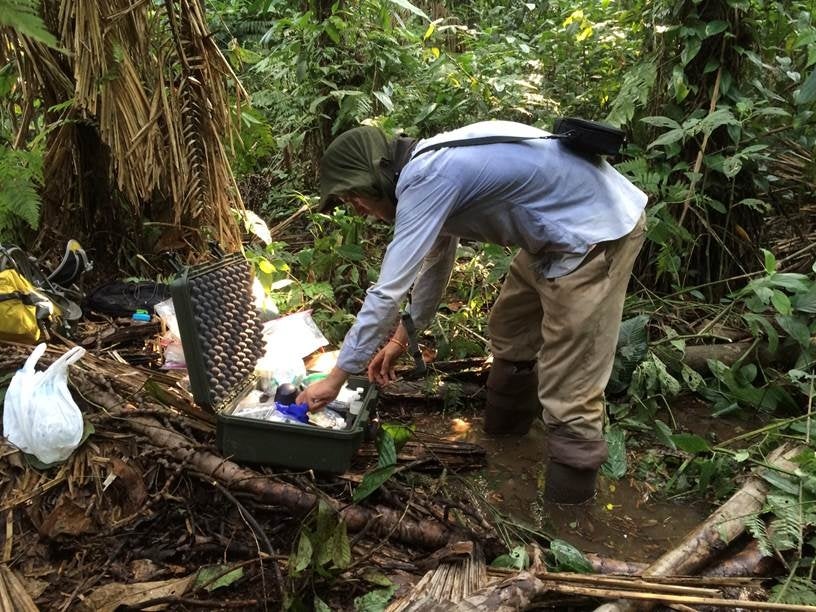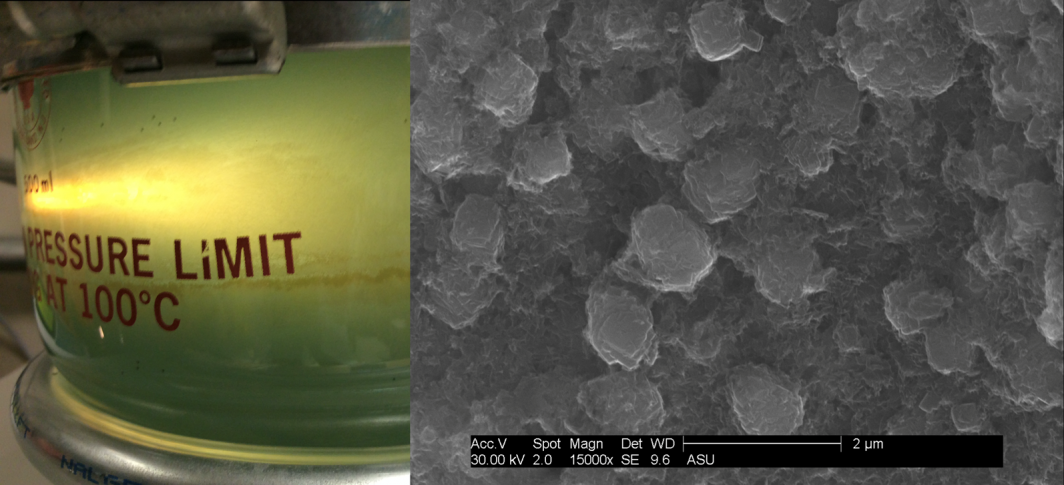Studies unravel the evolutionary timeline of nitrous oxide cycling on our planet

Steffen Buessecker prepares to enter the swampy peatlands of the Amazon basin (in Puerto Maldonado, Peru), which are commonly located in ground depressions promoting water-logged conditions and anoxic soils where abiotically formed N2O can be microbially consumed. Photo courtesy Steffen Buessecker
Nitrous oxide (N2O) is a greenhouse gas that contributes to the effects of global warming. Understanding how N2O is produced and metabolized is critical in coming up with solutions for the environmental problems affecting our society.
Steffen Buessecker, a former PhD student from Arizona State University's School of Life Sciences, and Associate Professor Hinsby Cadillo-Quiroz have worked for years on understanding the origins of this gas and its implications in modern tropical soils. Their work was recently published in the journals Nature Ecology and Evolution and Nature Geoscience.
“Nitrous oxide is one of the most powerful greenhouse gasses increasing in Earth’s atmosphere. Knowing the sources and how these are driven is very important to understand its effects on the climate in a changing environment,” Buessecker said.
Buessecker’s research started as an interesting observation on the bench. He collected tropical peat soil samples and observed a process generating large amounts of N2O in previously “killed soil” (soil without microbial life). This observation was surprising and an indication that there was abiotic production of N2O. In the past, abiotic N2O production was rarely observed in extreme geochemical sites. It was yet to be described and found as a widespread process in soils of the tropics.
Such observations led to their first publication, “Coupled abiotic-biotic cycling of nitrous oxide in tropical peatland.” Between 2017 and 2018, Buessecker traveled to remote locations in Central and South America to investigate in situ N2O production and metabolism rates. He found that a combination of abiotic and biotic reactions drive N2O production in tropical peat soils. In addition, they provide insight into the effect of oxygen exclusion due to waterlogging and temperature on such abiotic and biotic processes that will eventually contribute to the high N2O variability in the region.
Alongside this study, Buessecker was curious about the origins of N2O production, specifically in the early iron-rich oceans. In collaboration with the astrobiology community at ASU in the NASA Nexus for Exoplanet System Science network, as well as collaborators at the NASA Ames Research Center and the Jet Propulsion Laboratory, they measured rates of abiotic N2O production based on iron mineral catalysis (green rust) that were then used to model and simulate an early Earth atmosphere.
“To do the several stages of this story, we had to go way beyond ASU — astrobiology workshops, travels, national labs experiments, and many rounds of brainstorming and modeling were needed to connect the many thoughts needed in this work. (These are) good examples of stories built with villages, not just a single person but a motivated student and team,” Cadillo-Quiroz said.
The results of these experiments were published in the manuscript “Mineral-catalysed formation of marine NO and N2O on the anoxic early Earth.” They found that in an iron-rich marine environment, iron minerals could have mediated the formation of nitric oxide (NO) and N2O. These findings support the idea that an active abiotic denitrification process likely contributed to the development of respiratory metabolisms in early microbial life.
“We learned that more than 2.7 billion years ago, N2O was likely much more abundant on Earth than we thought and that, together with available NO, it played a significant role for early microbial metabolisms,” Buessecker said.
“The interesting feature of this paper was the combination of very detailed experimental work at the lab and the combination with modeling,” Buessecker said.
Their research received tremendous support from other scientists but also some skeptical reviews.
Buessecker said, “it is essential to conduct studies that stimulate discussion and not always confirm what we think we know. ... Anything disruptive is vital to realigning the view on things and to advance the understanding of a system.”
“On the early Earth, N2O was produced by iron minerals in the Archean ocean; in the modern tropics, it is produced by iron bound to organic compounds in soil,” Buessecker said. “You always have this abiotic production and then microbial consumption.”
With both publications, Buessecker and Cadillo-Quiroz were able to tell the story of N2O cycling from its origins and, most notably, where it’s heading regarding its environmental impact.
If you are a student looking for a research opportunity, learn more about Professor Cadillo-Quiroz's research on greenhouse gasses in the tropics in this video.
More Science and technology

ASU-led space telescope is ready to fly
The Star Planet Activity Research CubeSat, or SPARCS, a small space telescope that will monitor the flares and sunspot activity…

ASU at the heart of the state's revitalized microelectronics industry
A stronger local economy, more reliable technology, and a future where our computers and devices do the impossible: that’s the…

Breakthrough copper alloy achieves unprecedented high-temperature performance
A team of researchers from Arizona State University, the U.S. Army Research Laboratory, Lehigh University and Louisiana State…




